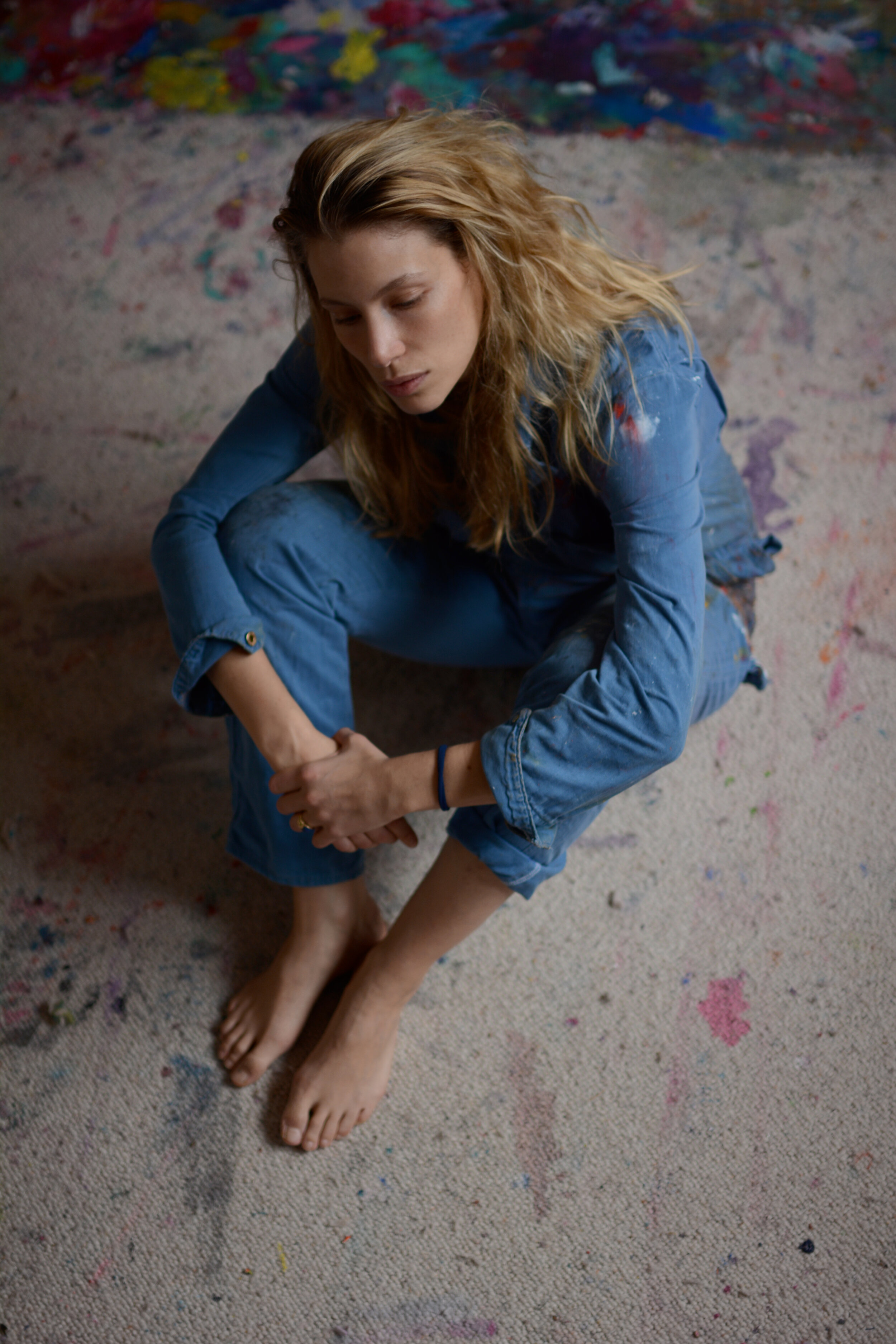Born in 1986 in Washington, D.C. Marie de Villepin grew up in the United States and India. Raised in a diplomatic household, Marie had the chance to surround herself with a prominent circle of poets, musicians, filmmakers, and artists including Zao Wou-Ki or Roberto Matta who also were family friends. Art was a constant feature in her upbringing, and she began developing her drawing and musical skills at an early age throughout her frequent travels.
In 2005, Marie moved to New York and then to Los Angeles, where she developed various musical projects, before devoting herself entirely to art. Drawing and painting emerged and eventually became ubiquitous. Marie filled dozens of notebooks, which allowed her to fix moments and emotions as a chronicle of her life. In search to deepen links between colors, sounds, and rhythm, she took a decisive step to transcribe her inner world onto canvas. Painting what she sees, and where she lived, in a way perhaps to ward off exile, loneliness, and doubts, through an accumulation of brushstrokes. Gradually, her whole world started taking shape, complete with landscapes, imaginary creatures, machines of all kinds, and waking dreams. Her works trace through space and time, oscillating between figuration and abstraction.
Marie has participated in a number of group exhibitions in New York, Los Angeles, Beijing, and Hong Kong. In 2019 she presented her first solo exhibition titled New Creatures, which marked her return to Paris. In March 2022 at Galerie Charraudeau she presented The Lost Weekend, a collection of works created in the United States and France. Marie was then selected as one of the twelve artists to receive Le Prix Antoine Marin. The prize is presented by Espace Julio Gonzalez in Paris, where each young artist is nominated by a renowned artist, Marie was nominated by Anselm Kiefer.
In 2023 for her first major solo exhibition in Asia, Marie de Villepin presented "Murmuration", an ode to the enchanting ballet of birds gathering in the sky. Between paintings and drawings, a sensory journey unveiled at the Villepin Art Gallery in Hong Kong. That show was followed by a solo exhibition, "Behind the Sun" at the Today Art Museum in Beijing. In 2024 her works were shown at the Collection Lambert in Avignon as well at the Zhi Museum in Chengdu China.
“Marie de Villepin's paintings embody an art of freedom. She lets herself be guided by the desire for the new; to take possession of what is already there in order to venture out to elsewhere; to throw off conventions, to cry out, and to up the stakes. The fulfillment of the form moves forward, sometimes only when the colors have apportioned everything that could be conquered, other times well before when, interspersed with blanks, lines and colors attain a fragile equilibrium of forces.”
– Daniel Arlaud
